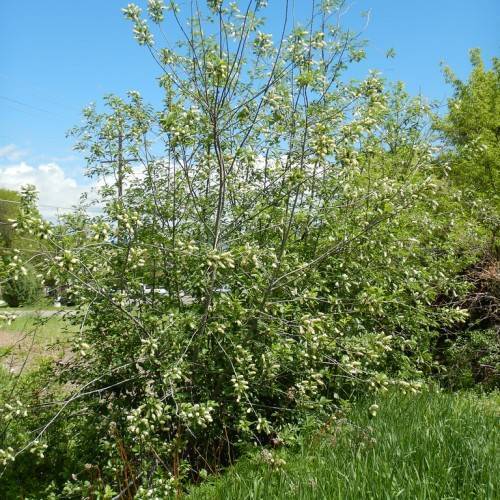
chokecherry
Prunus virginiana
Cycle:
Perennial
Watering:
Minimum
Hardiness Zone:
2 - 7
Flowers:
Flowers
Sun:
Full sun Partial sun
Soil:
Sandy Loamy Clay
Fruits:
Fruits In Summer Ready In
Edible:
Yes
Leaf:
Yes
Growth Rate:
Low
Maintenance:
Moderate
Poisonous To Humans:
Yes
Poisonous To Pets:
Yes
Drought Tolerant:
Yes
Thorny:
Yes
Invasive:
Yes
Care Level:
Medium
watering
Chokecherry plants should be watered deeply 1-2 times per week during the summer months. During the spring and winter months, the frequency of watering can be decreased to 1 time per week. A deep soaking is best for the plant as shallow watering can lead to root rot and nutrient deficiencies. When watering the plant, the soil should be allowed to dry slightly between waterings. The total amount of water per month should near approximately 4-5 inches. This amount may need to vary slightly depending on the climate and soil type.
sunlight
Chokecherry (Prunus virginiana) plants thrive in full sunlight and need at least 6 hours of direct sunshine each day. This type of plant is highly tolerant of many different climates, so it will do just fine with either slightly reduced or increased exposure to the sun. When grown in an area with long, hot summers, chokecherry plants should have some protection from the midday sun as that can cause damage to the foliage. During the cooler months of fall and winter, the plant will benefit from the additional sunlight.
pruning
Chokecherry (Prunus virginiana) should be pruned when dormant in late winter or early spring. To keep the plant healthy and encourage new growth, remove dead or damaged branches and shape the canopy. Prune up to 1-third of the canopy, making sure to cut back branches evenly to provide an even canopy shape. Be sure to clean and sharpen your pruners beforehand to prevent any potential infection and spread of plant diseases. Always disinfect your pruners with rubbing alcohol before using it on a new plant.
